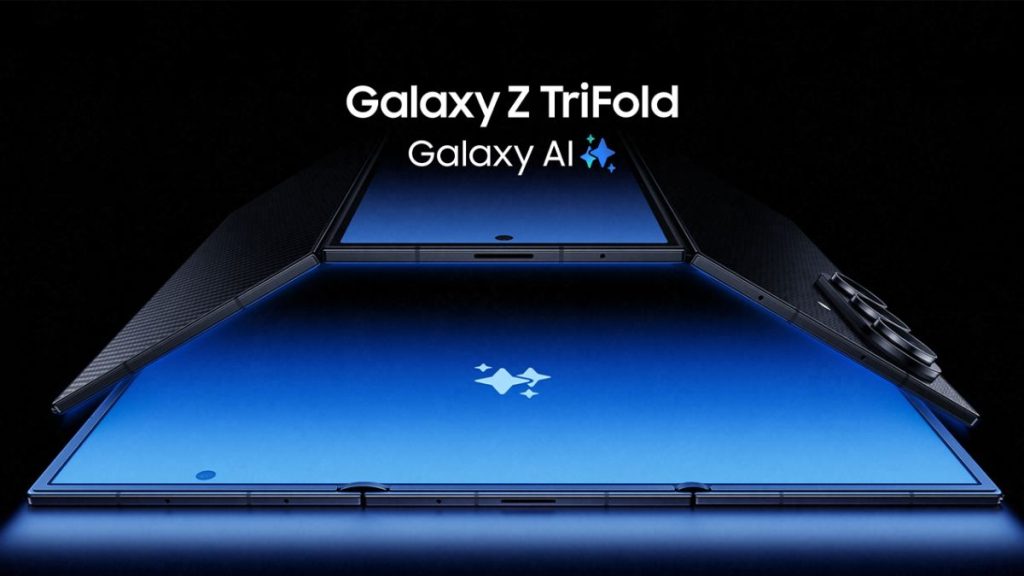It’s not a secret that mobile plan prices in Canada are amongst the highest in the world.It is estimated that, on average, a Canadian will pay 25% more than an American for the same plan, ie $50 per month for a 2GB plan against $40 for the same amount of data in the USA.
In fact, price differences even exist between Canada’s different regions. For a detailed look at the price differences between provinces and where you are likely to find the best deals, refer to our article on Canadian phone plans.
A common explanation for the difference in prices is the claim of a higher quality of service in Canada. Is that really true? Let’s look at the whole story comparing data we have.
An average cell phone plan in Canada and the US
To start, it is worth noting that even on basic plans like those that only include calls and text messages, Canadians pay more than their American neighbours. So when cellular data is added into the mix, the difference becomes really apparent.
The most popular plans in Canada, both in terms of demand from consumers as well as offers from providers, are the ones that offer between 1GB and 4GB of data. Given their popularity, as is seen in the table below, it is on these that the price gap is the highest. On the other hand, the three largest providers in Canada have all recently introduced ‘unlimited plans’ and are keen to see them widely adopted. Consequently, it on these 10Gb and above plans that Canada’s prices are actually cheaper than in the US.
Comparison of cellphone plans between Canada and the USA
| Mobile Data | Average Monthly Cost in Canada | Average Monthly Cost in the USA | Difference (%) |
|---|---|---|---|
| 0-1GB | $29 | $25 | +16% |
| 2-4GB | $49.5 | $39 | +25.6% |
| 5-8 GB | $57 | $61 | +6.5% |
| 10 GB or More | $65 | $72 | -9.7% |
Note: All plans in this table include a minimum of 300 minutes of calls and 100 texts on a national coverage. Prices have been converted to Canadian Dollars.
Average data usage in Canada and the US
The CRTC reports that the average data usage by a subscriber to mobile data in Canada is around 2GB. However, this statistic can be mis-leading because of the structure of data plans in Canada. Given the high base prices, the most economical plan for most people is the one that includes 1GB to 2GB of data.
On the other hand, our neighbours south of the border, with ready access to more economical plans that include a higher data allowance, use about 6.1GB of cellular data on average. If we presume that usage patterns are not drastically different between Canadians and Americans, this means that while most Canadians do perhaps need phone plans with a much higher data allowance, we make do with 1 or 2 GB.
That’s why several Canadian users are permanently looking for Wi-Fi and are trying to limit their monthly data consumption. So what uses the most data? If you stream music during your commute or you enjoy watching videos while on the go, you should know that this kind of use can easily increase the quantity of data used per month to 15GB.
Given this, and the recent introduction of unlimited data plans in Canada at comparable prices, it will be interesting to see changes related to average data usage in Canada over the next couple of years.
Data overage fees are another reason for the price differences between Canadian and American bills. Data overage fees are the fees that are incurred when users keep using data even after reaching the monthly authorized limit.
The patterns of usage combined with the low average data allowance in a plan has also meant that Canadians are used to paying data overage fees. After all, we Canadians collectively paid over $1.2 billion in overage fees to the major telcos, just last year.
Refer to our article on cellular data usage to avoid paying data overage fees.
Unlimited data plans in Canada
Unlimited data plans are new in Canada. In order to meet the growing demand for mobile data, several carriers recently launched unlimited plans. If you currently use approximately 10GB of data or more, consider subscribing to an unlimited plan.
Here is a list of carriers that offer plans with 10GB of data and more :
- Rogers and its Infinite Plan for 65$ per month
- Telus and its unlimited plan for 65$ per month
- Bell and its unlimited plan for 65$ per month
- Vidéotron and its 17GB plan for 75$ per month
These plans include high-speed data with a limit (usually 10GB), and once this limit is reached, it is still possible to use cellular data without having to pay overage fees but with drastically reduced downloading speeds for the rest of the month. This is also known as ‘speed throttling’. Throttled speeds can be as slow as 64Kbps, which is not even fast enough to stream music online !
In the USA, an unlimited plan costs on average $50 per month. This would include unlimited data with a 4G LTE speed. In Canada, such plans cost on average $75 on a BYOD basis. If you take a premium smartphone on a 2 year plan, an unlimited data plan would cost more.
The high speed data allocation is also more in the US than in Canada. Many US unlimited data plans offer 20GB to 75GB of high speed data in an unlimited plan. In contrast, here in Canada, all recently announced unlimited data plans only include 10GB of high speed data, before further usage is allowed at throttled speeds.
Data throttling in Canada and the US
One thing though that is better about Canadian mobile data compared to the US, is that in Canada we don’t have any mobile data speed throttling at peak hours. In the US, speed throttling at peak hours seems to be common enough that there are many carriers with unlimited plans, who offer a guaranteed amount of high-speed data even at peak hours. Data throttling in Canada does not depend upon network congestion. It comes into effect after the allocated 10Gb of high speed data is used up in an unlimited plan.
As noted above, while we do not have peak hour speed throttling in Canada, our unlimited plans come with 10GB (on average) of high speed data, after which all further use is throttled to slower speeds.
After comparing the largest plans available in the two countries, now let’s take a look at the smallest plans.
Cheapest cell phone plans in Canada and the US
Basic cell phone plans in Canada start around $5 per month but every carrier has a prepaid plan below $20 per month that allow calls.
In the USA, the carrier FreeUp Mobile offers a call line with a 1000 minutes call under the Bring Your Own Device option for $0 – which sounds awesome. Unfortunately, we don’t have anything similar here in Canada.
Canadian plans with calls, text messages and data can quickly cost more than $100 per month, especially when you buy a new smartphone on a contract.
In Canada, the 3 main carriers (Bell, Telus and Rogers) often offer plans that are similar. The three carriers offer a wide range of services including family plans with shared data, but in general smartphone only plans go beyond $80 per month. If you want the latest and greatest smartphone with a 2-year contract, plans can easily rise to $125 per month or more.
Comparison of basic cellphone plans prices between Canada and the USA
| Type of plan | Canada | USA |
|---|---|---|
| Cheapest Plan | $10 per month : 50 minutes call, no text, no data | $0 : 1000 minutes call/texts (no data) |
| Most Expensive Plan | $210 per month : unlimited calls and texts, 15GB of data | $133 per month : unlimited calls and texts, 37.5 GB of data |
Of course, lesser prices are available with the flanker brands of the big 3 such as with Fido (Rogers’ flanker), Virgin (Bell’s flanker) and Koodo (Telus’s flanker), but it is worth noting that on their own – Bell, Telus and Rogers provide telecommunication services to almost 75% of Canadians.
Hence, there is enormous scope to save simply by comparing offers. It is possible that you will find a deal on a similar plan with a flanker brand than you currently have with one of the main guys. Search here and see if you can find some savings.
Why are cell phone plans in Canada so expensive ?
In 2017, the National Post claimed that Canadian carriers charge as much as they do, simply because they can. In other words, the lack of strong competition outside the Big 3 means that the current players are in a position of strength in the market from which they can choose the rates they want to charge. Some even allege that the current Canadian telecom market is essentially an oligopoly and the similar prices that the Big 3 charge, points to price collusion.
According to the CRTC, the three major telecommunications companies and their affiliated brands (Fido of Rogers, Koodo of Telus, Virgin Mobile of Bell, etc.) hold 90% of the wireless market of the country. In order to compete with them, new carriers should build a nation-wide cell tower network, which is obviously extremely hard to set up because of the high costs that this kind of operation requires.
The dominant position of the three carriers is strengthened by the Canadian government that established some restrictions about foreign investments in the telecommunications business. This is certainly explained by the fact that Canadians telecommunication companies are amongst the most profitable for the country. With more than 40 billions of dollars income, which represents 3.3% of the Canadian GDP according to the Canadian government.
We observe that provinces with a fourth carrier (Saskatchewan, Manitoba and Quebec) can enjoy lower prices because this fourth carrier “forces” the three others to lower their prices in order to stay competitive.
What do the “Big 3” have to say ?
The three telecommunication giants explained that their high prices are justified by the fact that Canada has one of the best high-speed mobile services in the world;
Two of the three national networks operate exclusively under the 4G-LTE network, and most of the urban users can download with a 1000Mbps speed and even more. They also explained that Canada is a large country and so Canadians simply pay the price of the global coverage.
The competition of the fourth provider
The idea that plans are cheaper in provinces with a fourth carrier is justified to a large extent by the fact that in those three Canadian provinces, monthly fees for the usage of data are lower than in the rest of the country. These provinces – Quebec, Manitoba and Saskatchewan all have a powerful fourth carrier. Videotron in Quebec and XplorMobile in Manitoba and SaskTel in Saskatchewan. This fourth main carrier creates competition by offering lower prices. In order to remain competitive, other carriers are forced to adjust their prices to the lowest price.
Ontario, British Columbia and Alberta enjoy to a lesser extent lower prices because these regions have a Freedom Mobile coverage but only in big cities. Therefore, average prices are slightly below those we can find in the province where the competition of a fourth provider doesn’t exist.
The competition effects appear to be clear; when Bell, Rogers and Telus are in competition with another carrier that lower the prices, they are forced to align themselves with the fourth provider and reduce their prices. A solution seems to emanate from this thinking, Canada must foster more competition in the telecommunications business.
Either with foreign investments, governmental grants in order to help little providers to develop their own network coverage or with the arrival of new mobile carriers that may appear with the new 5G Network, the telecommunication industry in Canada really need to be disrupted.
A glimmer of hope for cell phone plans in Canada
Even though the situation described in this article seems quite desperate, a glimmer of hope has recently appeared. The price gap between Canada and the USA has recently reduced, at least for the very largest of plans. Since June 2019, the three big carriers (Bell, Telus and Rogers) launched unlimited data cell phone plans for $75 per month everywhere in Canada.
This means that regardless of your province you can enjoy this plan at the same price as the provinces with a fourth big carrier. But above all, these new prices for an unlimited plan narrow drastically the gap that could exist between Canada and the rest of the world. Maybe big carriers have finally surrendered under customer demand, the pressure exerted by small carriers or maybe they are figuring out that in an increasingly global market a dominant oligopoly position is not sustainable and competitiveness is the key to survive in a sustainable way.






